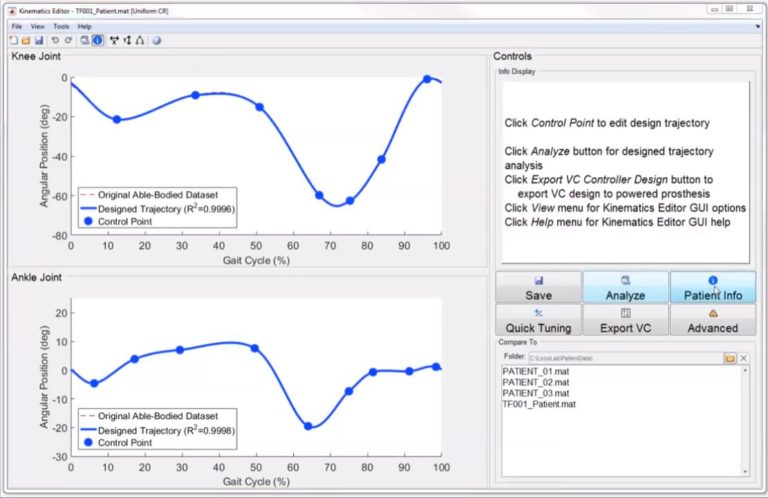This paper presents a potential solution to the challenge of configuring powered knee-ankle prostheses in a clinical setting. Typically, powered prostheses use impedance-based control schemes that contain several independent controllers which correspond to consecutive periods along the gait cycle. This control strategy has numerous control parameters and switching rules that are generally tuned by researchers or technicians and not by a certified prosthetist. We propose an intuitive clinician control interface (CCI) in which clinicians tune a powered knee-ankle prosthesis based on a virtual constraint control scheme, which tracks desired periodic joint trajectories based on a continuous measurement of the phase (or progression) of gait. The interface derives virtual constraints from clinician-designed joint kinematic trajectories. An experiment was conducted in which a certified prosthetist used the control interface to configure a powered knee-ankle prosthesis for a transfemoral amputee subject during level-ground walking trials. While it usually takes engineers hours of tuning individual parameters by trial and error, the CCI allowed the clinician to tune the powered prosthesis controller in under 10 min. This allowed the clinician to improve several amputee gait outcome metrics, such as gait symmetry. These results suggest that the CCI can improve the clinical viability of emerging powered knee-ankle prostheses.

